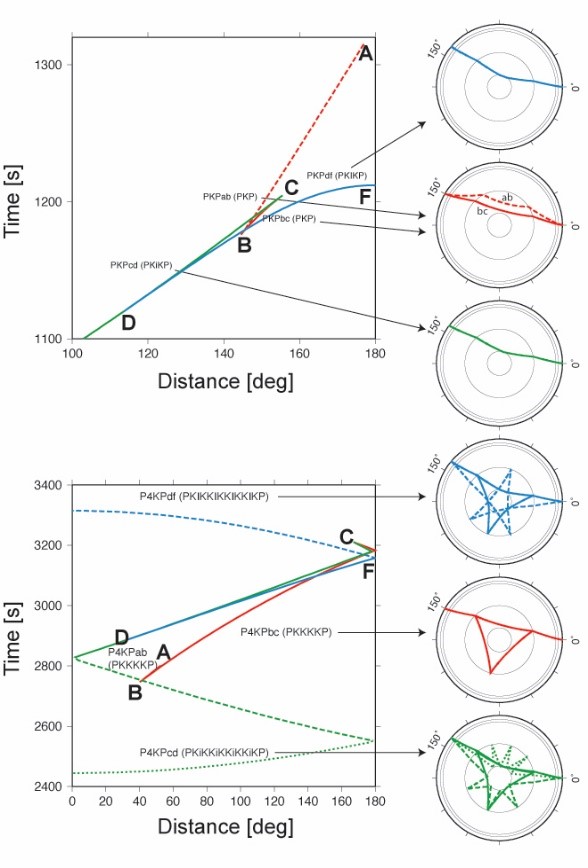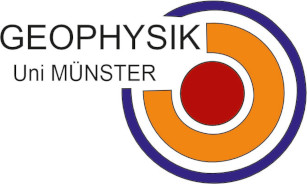Core-mantle boundary topography using P4KP waves
Differential travel times of P4KP and PKP waves are used in an attempt to constrain the topography of the core mantle boundary in localized areas. For epicentral distances of approximately 150 degrees, PKP and P4KP follow the same path through the crust and mantle and differ only in the core, since P4KP reflects three times at the underside of the core-mantle boundary (CMB). Hence travel time differences should only be due to the path differences in the core.

We use array techniques in order to enhance the signal to noise ratio and confirm the slowness and backazimuth of the P4KP waves. Data from the Gräfenberg Array in southern Germany yield a total of 27 events with observable P4KP waves. We find most travel time residuals between theoretical and observed P4KP minus PKP arrival time generally within a range of ±7 s.

A raytracing method is used to model the deviations of travel times due to changes of CMB depth at the reflection points of the P4KP waves. It is not possible to explain the observed travel time residuals with changes in depth of the CMB only; in several cases, the residuals are too large to be caused by CMB topography alone. Due to the expected coinciding ray paths of PKP and P4KP, the remaining variations are unlikely to be produced by heterogeneities in the lowermost mantle, and so remain for the moment unaccounted for. We find that the reflection coefficient of P4KP undergoes a polarity reversal for some scenarios of lower mantle velocities and densities and the observed P4KP polarity at this distance range can therefore help to investigate the lowermost mantle in addition to CMB topography.
For more information, please see:
Schlaphorst, D., C. Thomas, RT. Holme, R. Abreu, Using P4KP waves to measure core-mantle boundary topography. Geophys. J. Int., 204, 1060-1071, 2016.

